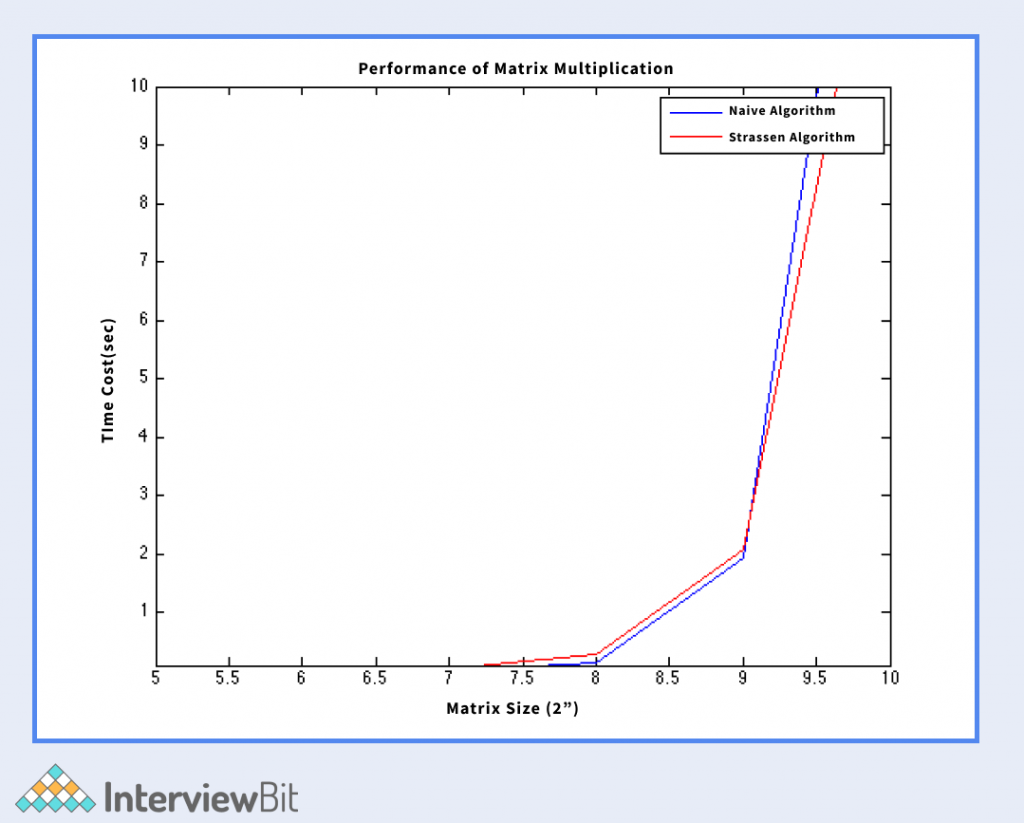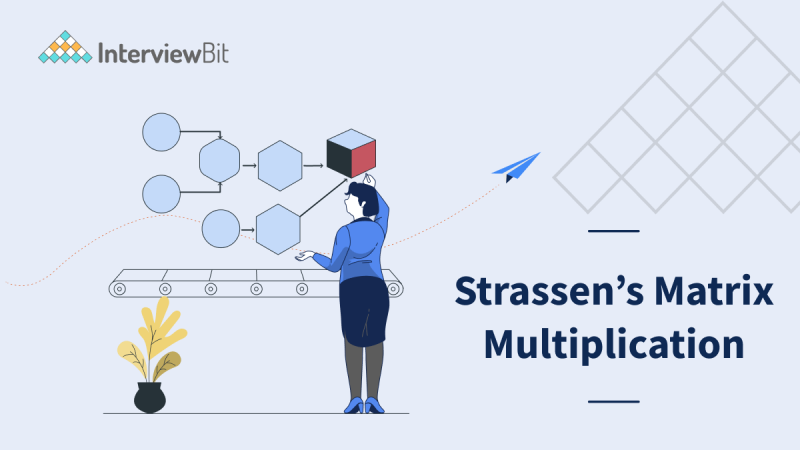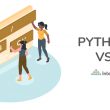Problem Statement
Why Strassen’s matrix algorithm is better than normal matrix multiplication and How to multiply two matrices using Strassen’s matrix multiplication algorithm?
So the main idea is to use the divide and conquer technique in this algorithm – divide matrix A & matrix B into 8 submatrices and then recursively compute the submatrices of C.
Consider the following matrices A and B:
A = |a b|, B = |e f| and we know A*B = matrix C = |ae+bg af+bh|
|c d| |g h| |ce+dg cf+dh|
There will be 8 recursive calls:
a * e
b * g
a * f
b * h
c * e
d * g
c * f
d * hThe above strategy is the basic O(N^3) strategy
Confused about your next job?

Using the Master Theorem with T(n) = 8T(n/2) + O(n^2) we still get a runtime of O(n^3).
But Strassen came up with a solution where we don’t need 8 recursive calls but can be done in only 7 calls and some extra addition and subtraction operations.
Strassen’s 7 calls are as follows:
a * (f - h)
(a + b) * h
(c + d) * e
d * (g - e)
(a + d) * (e + h)
(b - d) * (g + h)
(a - c) * (e + f)Our new matrix C’s new quadrants
matrix C = |p5+p4-p2+p6 p1+p2 |
| p3+p4 p1+p5-p3-p7| 
Approach: Strassen’s Submatrix
p5+p4-p2+p6 = (a+d)*(e+h) + d*(g-e) - (a+b)*h + (b-d)*(g+h)
= (ae+de+ah+dh) + (dg-de) - (ah+bh) + (bg-dg+bh-dh)
= ae+bg
p1+p2 = a*(f-h) + (a+b)*h
= (af-ah) + (ah+bh)
= af+bh
p3+p4 = (c+d)*e + d*(g-e)
= (ce+de) + (dg-de)
= ce+dg
p1+p5-p3-p7 = a*(f-h) + (a+d)*(e+h) - (c+d)*e - (a-c)*(e+f)
= (af-ah) + (ae+de+ah+dh) -(ce+de) - (ae-ce+af-cf)
= cf+dhThe time complexity using the Master Theorem.
T(n) = 7T(n/2) + O(n^2) = O(n^log(7)) runtime.
Approximately O(n^2.8074) which is better than O(n^3)

Pseudocode of Strassen’s multiplication
- Divide matrix A and matrix B in 4 sub-matrices of size N/2 x N/2 as shown in the above diagram.
- Calculate the 7 matrix multiplications recursively.
- Compute the submatrices of C.
- Combine these submatrices into our new matrix C
Complexity:
- Worst case time complexity: Θ(n^2.8074)
- Best case time complexity: Θ(1)
- Space complexity: Θ(logn)
C++ Code Implementation
Java Code Implementation
Python Code Implementation
Applications
Generally, Strassen’s Method is not preferred for practical applications for the following reasons.
- The constants used in Strassen’s method are high and for a typical application Naive method works better.
- For Sparse matrices, there are better methods especially designed for them.
- The submatrices in recursion take extra space.
- Because of the limited precision of computer arithmetic on noninteger values, larger errors accumulate in Strassen’s algorithm than in Naive Method







 Join WhatsApp Group
Join WhatsApp Group


